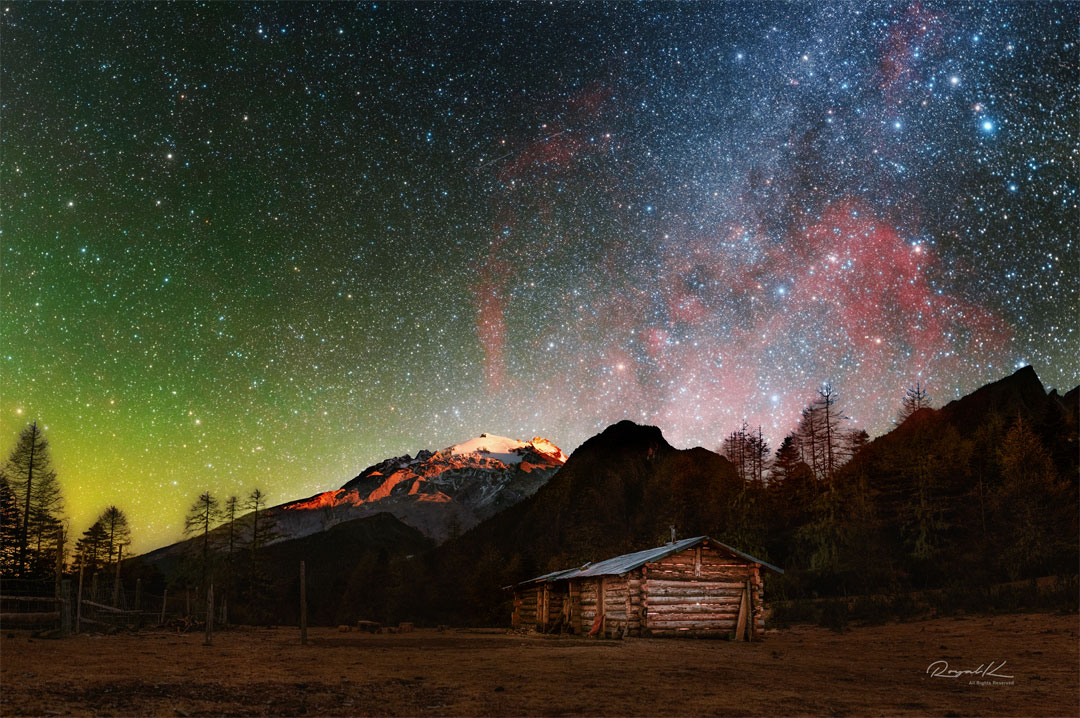2022年6月27日
The Gum Nebula over Snowy Mountains
Image Credit & Copyright: Wang Jin
Explanation: The Gum Nebula is so large and close it is actually hard to see. This interstellar expanse of glowing hydrogen gas frequently evades notice because it spans 35 degrees — over 70 full Moons — while much of it is quite dim. This featured spectacular 90-degree wide mosaic, however, was designed to be both wide and deep enough to bring up the Gum — visible in red on the right. The image was acquired late last year with both the foreground — including Haba Snow Mountain — and the background — including the Milky Way’s central band — captured by the same camera and from the same location in Shangri-La, Yunnan, China. The Gum Nebula is so close that we are only about 450 light-years from the front edge, while about 1,500 light-years from the back edge. Named for a cosmic cloud hunter, Australian astronomer Colin Stanley Gum (1924-1960), the origin of this complex nebula is still being debated. A leading theory for the origin of the Gum Nebula is that it is the remnant of a million year-old supernova explosion, while a competing theory holds that the Gum is a molecular cloud shaped over eons by multiple supernovas and the outflowing winds of several massive stars.
Tomorrow’s picture: moon planet
雪峰上空的甘姆星云
影像提供与版权: Wang Jin
说明: 甘姆星云是如此庞大与邻近,实际上反而难以一窥其全貌。这团广袤不停散发辉光的氢气云,人们之所以经常视而不见,则是因为它的宽度超过35度(70个满月),并且整体上非常昏暗。这幅跨幅达90度的精采拼接主题影像,宽度和深度皆足以呈现右方泛红的甘姆星云。影像系摄于去年底,其中呈现前景哈巴雪山及背景银河盘面的照片,皆是由同一部相机摄于中国云南省香格里拉的相同地点。甘姆星云离我们很近,它的前缘近在450光年之外,后缘只有1,500光年远。甘姆星云是以澳洲宇宙星云猎人及天文学家甘姆(1924-1960)为名,不过其起源目前仍颇有争论。最可信的起源论认为,形状复杂的甘姆星云是高龄百万年的超新星爆炸遗迹。另一个竞争的理论则认为,甘姆星云是远古以来受到多个超新星和大质量恒星外泛风塑形的分子云。
明日的图片: moon planet







